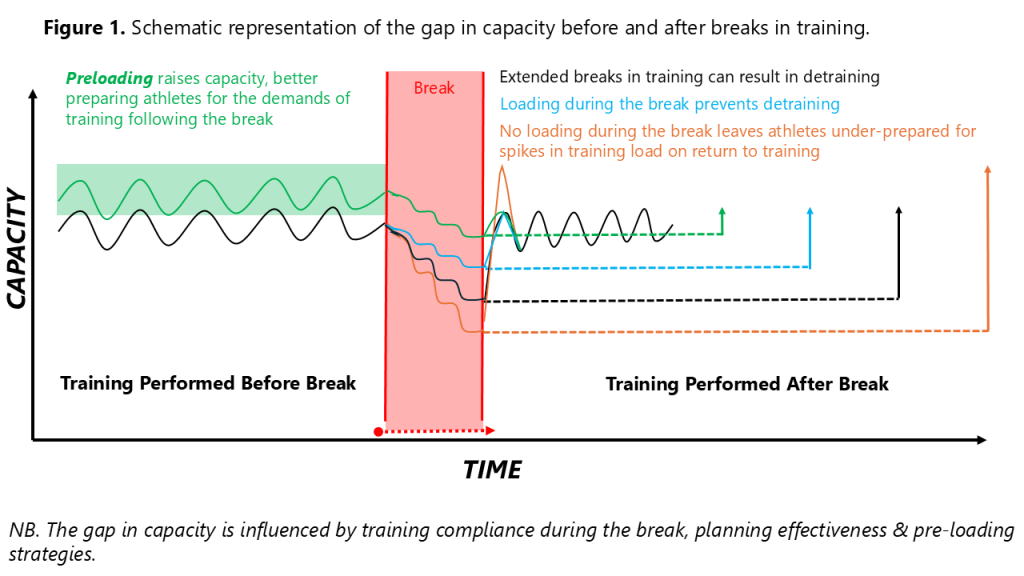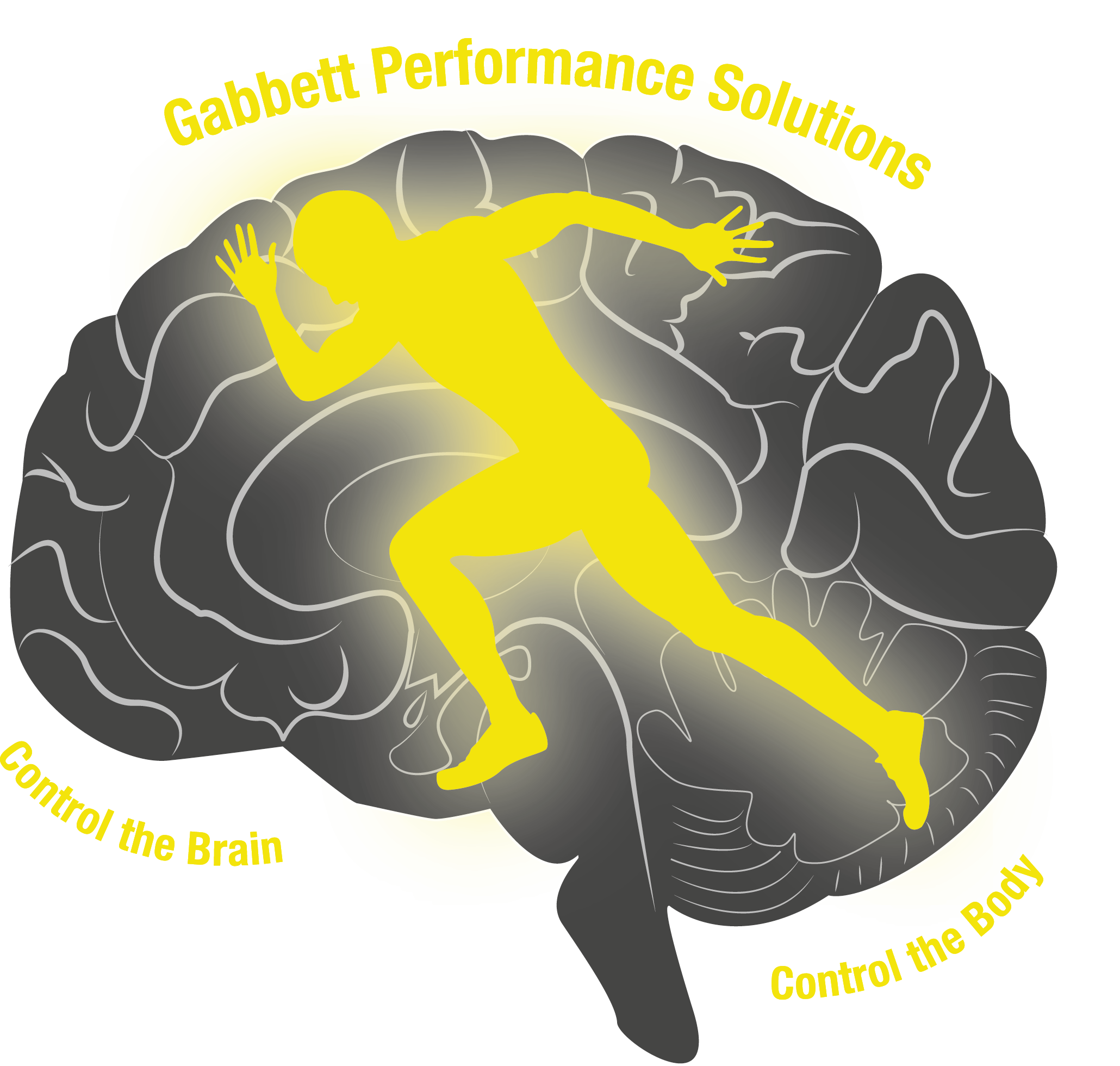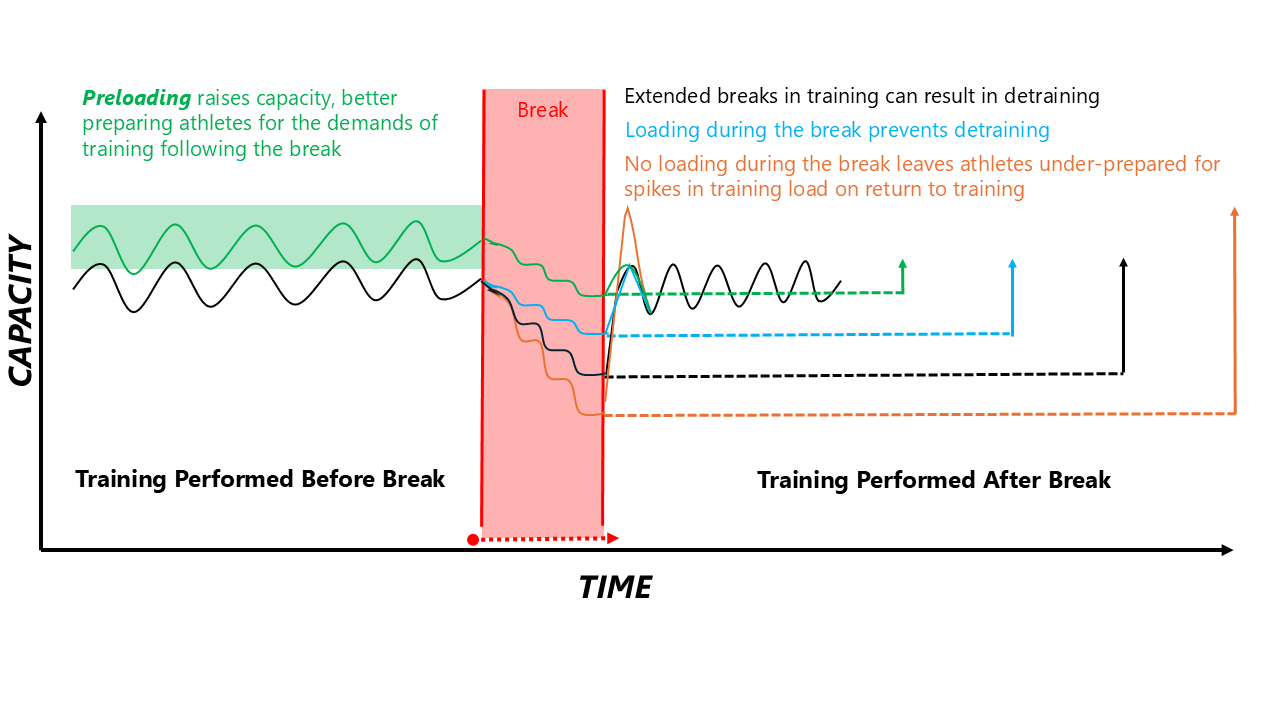Imagine your athletes have completed a gruelling pre-season. You’ve built momentum by stringing consistent training weeks together. But now, the Christmas/New Year period is approaching, and your team is schedule for a 2-week break. The athletes are already planning holiday activities. You don’t want to lose all of the gains in physical capacity that have been made. And the Head Coach wants a plan!
While 2 weeks is an insufficient time to lose all physical capacities, there will inevitably be a degree of detraining and reduction in chronic load if your athletes fail to train during their break. Here’s 3 simple strategies to ensure safe progressions in training load once your athletes return from their break.
- Provide Your Players with a Remote Training Plan
Many elite athletes perform 10 (or more) training sessions across a week. Given that athletes will often need to travel to reconnect with family and attend various Christmas and New Years’ celebrations, it is unrealistic to expect they maintain the same training frequency across their break. However, research has shown that as long as intensity is maintained, 2 sessions/week, for as little as 13 minutes/session, is an adequate training stimulus to maintain aerobic adaptations [2]. Strength and power can be maintained with as little as 1 set, as long as the dose is applied across 2 sessions per week, and using an adequate training intensity (70-85% 1RM) [1]. A total of 4 sessions in a week should be manageable – if the athlete actually does the training!! If not, spikes in load are likely to occur upon resumption of training.
- Resumption of Training Requires Effective Planning
Let’s consider what many coaches think about the Holiday season and the state of athletes once they resume training:
Coach’s Mindset #1: “My athletes are away from regular training so they should be ‘fresh’!”
Coach’s Mindset #2: “If they’re fresh, we should be able to train them hard on the first day back from their break!”
I am the greatest advocate for hard training, but often these initial sessions expose athletes to higher training loads than they ever experienced during their pre-season. Players might return to training with less fatigue (i.e. “fresh”), but if they have done little training during the Holiday period, they are also likely to be detrained, with lower chronic loads. The lower capacity, coupled with the spike in training load is not the smartest way to reintroduce athletes to training, particularly because after the initial training session, training loads revert to the mean and resemble the typical training performed prior to the break! Good coaching involves a plan and a sensible progression back into training.
- Pre-Load and Raise Capacity of Your Athlete
Despite providing athletes with a program to perform during their break, they are under no obligation to complete it. Equally, as much as we would like coaches to temper their enthusiasm in the first training session/s following the Holiday period, my experience is in most cases, they will do what they want!! So how do we ensure we can keep the athlete fit and available upon resumption of training?
The answer lies in “pre-loading”. Just as “prehab” is recommended for injured athletes prior to surgery to maintain muscle mass and strength and minimize detraining, pre-loading can be used to raise capacity when entering the break. Pre-loading involves a subtle increase in training load 4-6 weeks before the break. This increase in training load should not elicit substantial fatigue and can be tailored to the individual development needs of the athlete.

Over a period of weeks, training sessions might include (as examples):
- An extra set on each muscle group in the gym;
- An extra 2-3 minutes of high-intensity running;
- An additional block of skill development or small-sided games.
Pre-loading serves a number of purposes – it prepares players for future higher-intensity training or competition demands, and importantly, it means that if chronic load decays across the Holiday season, it falls from a higher starting point. Equally, if spikes in load occur upon the resumption of training, athletes have a greater capacity to tolerate these demands.
Front-Load Your Energy to Avoid Problems in the Back-End!
Historically, sports medicine and performance staff have had to be reactive to spikes in training load and manage the consequences of poor training compliance and/or ineffective planning (e.g. by increasing recovery strategies and passive therapies). Pre-loading allows practitioners to be proactive and get out front of the challenge – “front-loading” training, ensures you avoid problems in the back-end!
Check out all of our Live course locations and dates here!
Level up your skills with our Online courses!
References
- Androulakis-Korakakis, P., et al. The minimum effective training dose required to increase 1RM strength in resistance-trained men: a systematic review and meta-analysis. Sports Med., 2020;50:751-765.
- Spiering, B., et al. Maintaining physical performance: the minimal effective dose of exercise needed to preserve endurance and strength over time. J. Strength. Cond. Res., 2021;35:1449-1458.





